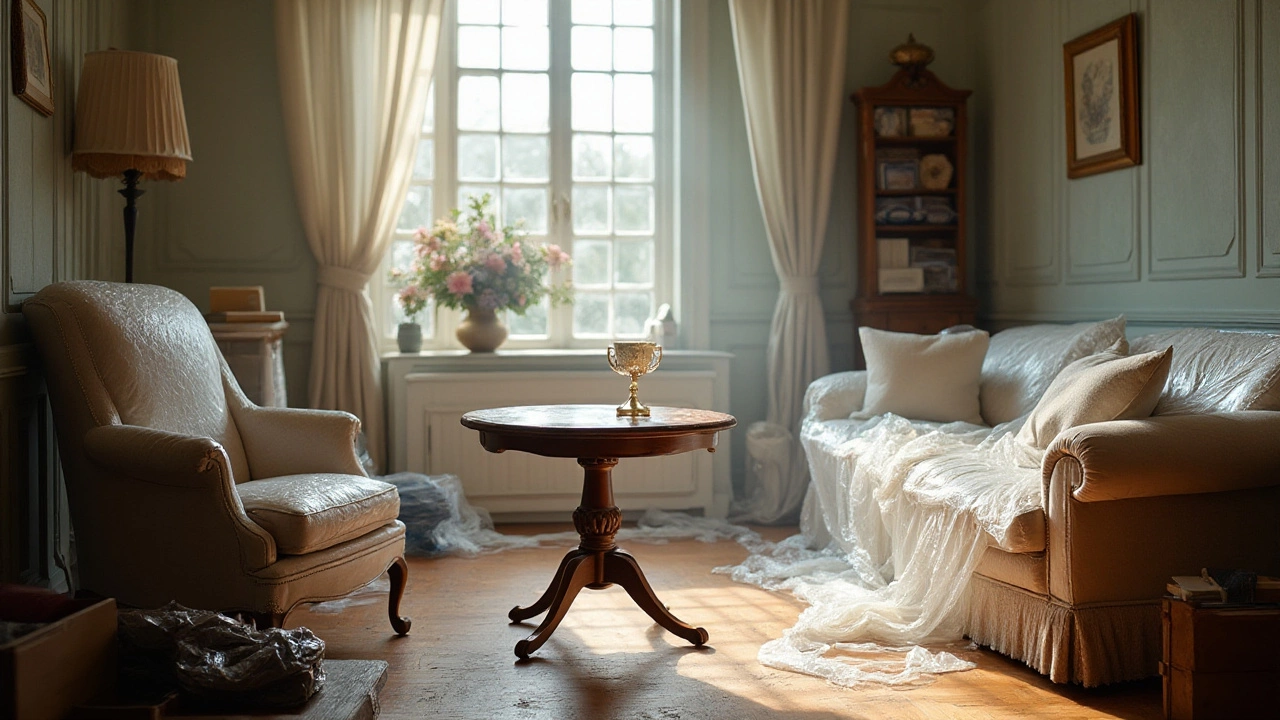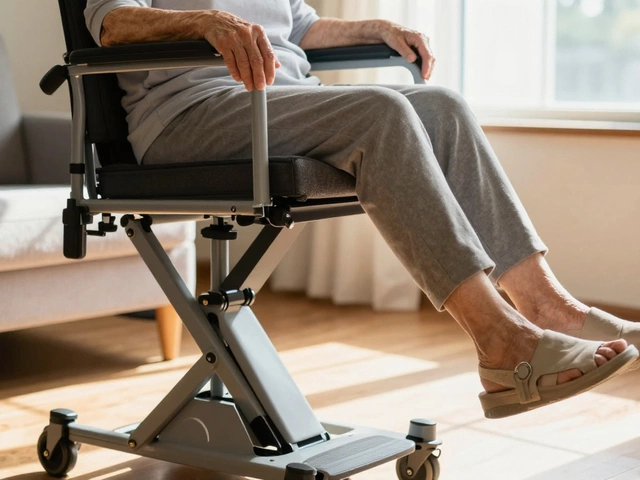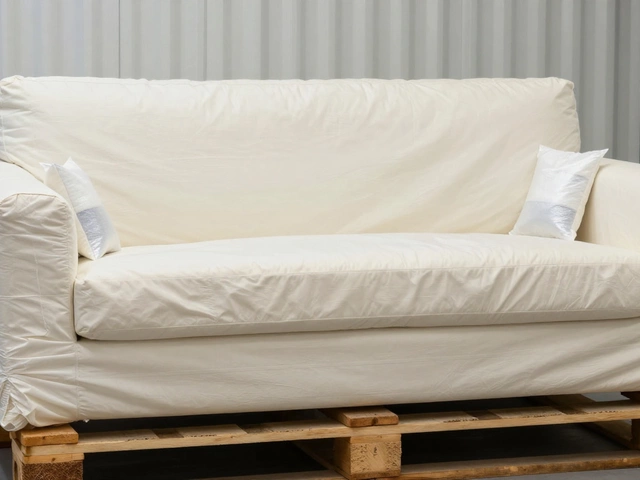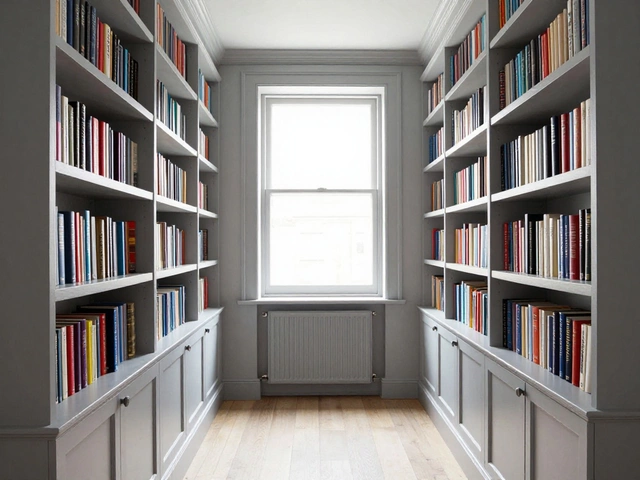Storing furniture might seem like a straightforward task, but there's more to it than simply finding space. One vital step that can make a significant difference in preserving your beloved pieces is wrapping them properly before putting them away. A little preparation can save you from encountering unpleasant surprises, such as discovering your sofa has developed a musty odor or finding scratches and dents on your coffee table.
It's common knowledge that when furniture is stored in less-than-ideal conditions, it can accumulate dust, get exposed to moisture, or even sustain damage over time. That's why it's so crucial to wrap your furniture, creating a protective barrier that keeps external elements at bay. The process is simple, and the benefits are long-lasting.
- Why Wrapping Furniture is Important
- Choosing the Right Materials
- How to Wrap Different Types of Furniture
- Mistakes to Avoid When Storing Furniture
- Additional Tips for Storing Furniture
- Long-Term Storage Considerations
Why Wrapping Furniture is Important
When the conversation turns to storing furniture, the significance of wrapping your pieces cannot be overstated. At first glance, the need to wrap furniture might appear trivial, but it plays a fundamental role in preserving the integrity of your possessions. Whether you're storing your grandmother's antique armoire or your trusty living room sofa, the journey from preserving their surfaces to shielding them against environmental hazards begins with a simple wrap. The environmental conditions in which furniture is stored can vary wildly, from dry and dusty to damp and humid, each with its own set of challenges. Wrapped furniture provides a barrier against these exterior conditions, effectively preventing dust accumulation, which can lead to abrasions and spoil the finish of your items. Not to mention, skin oils naturally present in our hands can cause wooden surfaces to degrade over time if left unchecked.
Hot and humid climates often bring an additional adversary—moisture. Excessive humidity can seep into unprotected wood, causing warping, expansion, and even unpleasant odors. Proper wrapping involves not just any material but often the right combination of blankets and plastic wrap, which together create a moisture-resistant barrier that maintains the furniture's original condition. In colder months, wrapping can prevent cold air and moisture from affecting upholstery or leather finishes, both of which can crack and deteriorate if not shielded properly. This is particularly important for leather items that can become brittle and more prone to cracking.
“A furniture piece wrapped today is a memory preserved tomorrow,” noted renowned furniture conservator Emma Langford in her handbook on furniture care. Her observation reminds us that protecting our furniture is about preserving our memories and family heritage, an idea that continues to resonate with many.
The physical movement involved in storage can also pose risks. Despite our best efforts, moving hefty furniture into storage can expose it to unintended knocks and scrapes. Wrap furniture securely to add a cushioning layer that absorbs impacts during transit. This protective measure is akin to putting a seatbelt on your most cherished household pieces during their ride to their temporary home. Scratches not only spoil the appearance but can also harbor dust and dirt, accelerating deterioration over time.
Whether you're taking advantage of a seasonal shift to declutter or planning long-term storage, wrapping furniture is an investment in the furniture itself. By using appropriate materials like thick moving blankets and industrial-strength plastic, you're ensuring that the protective coverage is as durable as the items its meant to safeguard. Quality wrapping materials, much like a good insurance policy, often prove invaluable in protecting the piece’s value while in storage.
A survey by a leading furniture association found out that owners who wrap their items have a thirty percent lower chance of facing maintenance issues after the storage period. Such statistics underline the fact that investing time in proper wrapping translates to significant future savings, both financially and sentimentally. As we store furniture, these protective measures ensure that when pieces reemerge, they're ready to adorn our homes once more with all their original charm intact.
Choosing the Right Materials
When it's time to wrap your precious furniture storage items, the materials you choose can make a world of difference in ensuring your pieces withstand the test of time. The first line of defense is using furniture covers like cloth blankets or pads, which are preferred for their durability and reusability. These materials provide a breathable layer that protects surfaces from scratches and keeps dust away while allowing air circulation, essential for preventing moisture buildup. Plastic covers, on the other hand, are more effective against moisture but might enclose humidity if not used properly, leading to mildew issues. That's why striking a balance with cloth-covered wrap might be your best bet for some items.
If you're considering plastic covers, such as stretch wrap or plastic sheeting, they do have their advantages in protecting furniture from water and are also extremely easy to apply. However, they should be used with caution. Over time, any trapped moisture can create a humid environment conducive to mold. It's important to wrap items gently to avoid airtight seals that could harm wooden surfaces. For an all-around protective approach, consider wrapping your furniture with a furniture blanket for padding, followed by a loose plastic cover for moisture resistance. This two-layer system provides optimal shields on both fronts.
Evaluating Application Methods
A common mistake people make is assuming a thicker layer automatically means better protection. On the contrary, precision in wrapping is key. Instead of heaping layers indiscriminately, it's more effective to ensure each layer hugs the furniture securely without limiting airflow, especially if using materials like stretch wrap. When wrapping uniquely shaped items such as chairs with arms or intricately carved tables, take the time to gently mold the wrap along their contours. This attention to detail can prevent pressure spots that might otherwise cause stress cracks or imprints on delicate surfaces.
According to an industry expert from Moving Home Advice, "Preparing your furniture with care before storage will not only preserve the look of your items but can also save you money in repairs or replacements down the line."
A handy tip is to invest in high-quality padding paper for smaller items. This paper is similar to bubble wrap in its cushioning ability but is easier to handle and less wasteful. When it comes to securing your wrapping materials, it’s crucial to use non-adhesive tape or ties. Sticky tapes can leave residue that damages finishes, so opting for secure straps is always a safer choice.
| Material | Protection Offered |
|---|---|
| Cloth Blankets | Breathability, Dust Protection |
| Plastic Wrap | Moisture Resistance |
| Padding Paper | Cushioning for Small Items |
Making informed decisions about how you wrap and store your furniture can extend its lifespan and maintain its aesthetic appeal. Being thoughtful about your material choices sets the foundation for keeping your treasured pieces safe, sound, and ready to unveil when it's time for them to shine again.

How to Wrap Different Types of Furniture
Wrapping different types of furniture largely depends on the materials they are made from and their specific needs for protection. When you store upholstered pieces like sofas and chairs, you want to focus on guarding against moisture and dust. Using plastic wrap or specialized covers can offer a sealed barrier while still allowing the fabric to breathe. This is crucial because any trapped moisture can lead to mildew or bad odors. On the other hand, wooden furniture requires a different approach. Perhaps surprisingly, a common mistake is wrapping wood too tightly in plastic, which can trap condensation and harm the finish or warp the wood over time. Instead, use furniture pads or moving blankets to provide a soft cushion that wards off scratches and monthly changes in humidity. When it comes to leather furniture, you need to find a balance between protection from environmental factors and allowing leather to keep its natural oils intact. Cotton sheets, or furniture covers specifically designed for leather, can help maintain the leather's texture and sheen.
Glass and mirrors pose their own challenges, primarily around preventing cracks and shattering. Start this process by wrapping each piece in packing paper or bubble wrap, being sure to completely cover all edges and corners for extra care. Mirrors benefit from an additional layer of cardboard placed around them, creating a rigid protective shell. The more fragile the item, the more layers of protection you should apply. Sometimes even the most careful wrapping job isn't enough to prevent everything, so consider labeling these packages with 'fragile' stickers to ensure movers handle them with care.
"An ounce of prevention is worth a pound of cure," observed Benjamin Franklin, and nowhere is this truer than in the care of your valued possessions.
For metal furniture, especially those pieces that are likely to rust, it’s a smart move to oil any metal surfaces lightly. This practice can prevent rust by creating a barrier against moisture. After oiling, certainly wrap the items in blankets or pads rather than plastic, letting the metal breathe and stay rust-free. Lastly, large furniture like beds or cabinets often require dismantling partially. This tactic makes wrapping and storing much easier and efficient. Bag up small parts like screws and bolts, label them carefully, and attach them securely to the main pieces they belong to. This precaution ensures easy reassembly later and avoids hunting through endless bags for the right part.
If you need to store antique or particularly valuable items, taking extra steps is wise. Consider consulting professionals who specialize in antique furniture preservation or storage. They can give you tailored advice and potentially help you source some materials which are not commonly available, ensuring everything is cosseted properly.
Mistakes to Avoid When Storing Furniture
When it comes to furniture storage, there’s no doubt that things can go awry if you're not careful. One common mistake is neglecting to clean the furniture before wrapping. Dust and dirt left on the surfaces can settle into the materials over time, which leads to damage. Cleaning ensures that no grime gets trapped underneath your protective coverings. Also, using the wrong cleaning products might result in adverse reactions with your furniture's finish, so it's always best to opt for cleaners that are specially formulated for the specific type of material.
A second mistake is choosing inappropriate wrapping materials. Don't settle for old blankets or newspaper, assuming they will offer optimum protection. Instead, consider using bubble wrap for delicate items or purpose-made furniture covers that offer better moisture resistance and cushioning. Plastic wrap might seem a great choice for keeping moisture at bay, but it can also create a humidity pit where mold can flourish if there's any existing moisture.
Storing furniture directly on the ground might seem efficient, but it exposes your items to excess moisture. Always use pallets or risers to elevate your furniture from the floor. This prevents any liquid spills or flooding from reaching your items. Another blunder is overlooking the importance of climate control. Temperature fluctuations can wreak havoc, causing wood to warp and veneers to lift. Ideally, you’ll want to store items at temperatures between 55 and 85 degrees Fahrenheit, where the humidity stays consistent.
A notorious error involves inadequate labeling. Picture your future self, digging through poorly labeled bundles searching for a specific item—it’s better to clearly label and map out your storage. Use permanent markers to jot down contents on each package.
“Label, label, and label,” suggests an organizer guru from the National Association of Professional Organizers. “You will thank yourself later for the time saved.”In addition to labeling, it’s equally crucial to create an inventory of everything that’s stored, making retrieval a breeze.
Finally, storing the heaviest items on top of the lighter ones spells disaster. That delicate vase or antique mirror doesn't stand a chance under the weight of grandma's oak dresser. Heavy items should always be placed at the bottom of the storage stack, providing a sturdy base. Fragile items, on the other hand, must be secured on top with ample padding. Always plan the layout ahead of time, ensuring an even distribution of weight across your storage space.
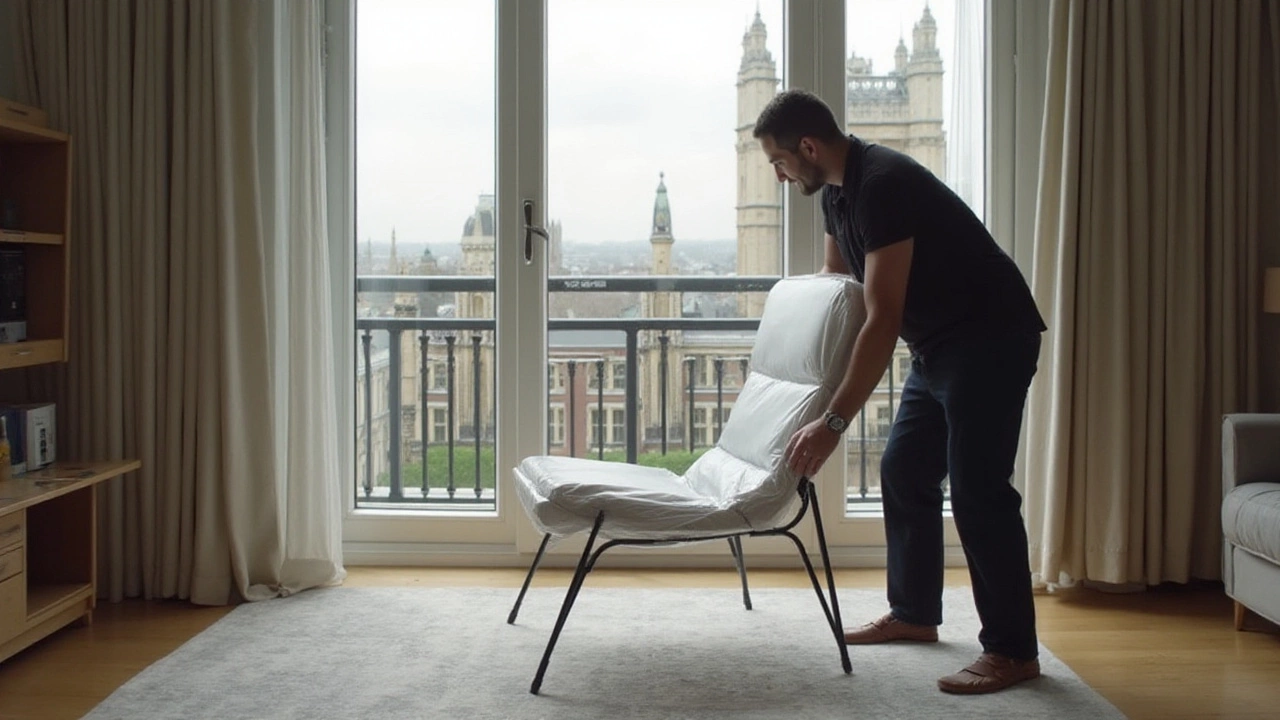
Additional Tips for Storing Furniture
When it comes to ensuring that your furniture storage endeavors are successful, there are several additional tips that can significantly enhance the safety and longevity of your items. Before tucking that beloved armchair or vintage dresser away in a unit, it's crucial to keep a few key tips in mind. One of the foremost considerations is the location and type of storage. Climate-controlled units are highly recommended, especially in areas with extreme weather conditions. Moisture and temperature swings can severely damage your furniture, leading to warping, rotting, or even mold. Investing in a climate-controlled setting might not be as costly as replacing damaged pieces.
Another essential strategy involves the method by which you position and store your furniture. It's often beneficial to place larger, heavier pieces at the back of the storage unit, working your way to smaller items at the front. This arrangement not only protects delicate items but also aids in creating a stable, organized environment. Additionally, ensure that items aren't merely placed directly on the floor. Raising them using pallets or wood planks allows for air circulation underneath, which helps in preventing moisture build-up. It's been reported by storage experts that "elevating your furniture inside of storage can extend its life by at least a couple of years."
Don't forget to periodically check on your stored items. Scheduling a visit every few months ensures that you catch any emerging problems early. For long-term furniture storage, it's wise to replace or adjust protective wrappings when necessary. Dust and cleaning every now and then can be immensely beneficial as well. Make it a habit to keep a detailed inventory list, documenting each item, its condition, and location within the unit. This practice is particularly useful if you're storing numerous pieces, providing ease and accuracy when you need to retrieve something.
Statistics show that improper storage accounts for over 25% of household furniture damage reported annually. Therefore, paying attention to these nuances not only saves on repair costs but also prevents the heartache of parting with cherished memorabilia. Additionally, consider using furniture pads or blankets to offer that extra layer of protection against scratches and dings. Remember, before storing anything, clean everything thoroughly. Dust and grime left on furniture can cause stains that become exponentially harder to remove the longer they sit.
While wrapping furniture is crucial, using the right wrappings matters too. Breathable covers, such as cotton sheets, allow for better airflow compared to plastic, which can trap moisture against surfaces. Keep in mind, no method is truly foolproof. Therefore, an ounce of preventive maintenance, such as these storage tips, can mean the difference between pristine and ruined furniture down the line.
Long-Term Storage Considerations
When the time comes to stow away your beloved sofa or elegant antique wardrobe for long periods, it's essential to think beyond just wrapping. Furniture storage can often stretch months or even years, and ensuring that your pieces emerge in perfect condition demands a meticulous approach. This includes choosing a storage environment that keeps them safe, insulated from changes in temperature and humidity. A climate-controlled storage unit can be the difference-maker, maintaining a consistent environment that shields wood and upholstery from warping or mildew. The initial cost might be more, but it pays dividends in preserving the integrity of your furniture. Imagine the heartache of finding your treasured items irrevocably damaged.
Before moving anything into storage, give each piece a thorough cleaning. Dirt and grime can settle deeply over time, becoming a breeding ground for mold and bacteria, especially in hidden crevices. Consider using a gentle cleaner suitable for specific materials, and make sure everything is completely dry before wrapping. If moisture is trapped beneath protective layers, it can lead to the dreaded condition known as "wood rot" in expansive wooden surfaces. Don't forget the often-overlooked cushions; they need just as much attention to ensure they don't end up hosting unpleasant odors or unsightly stains.
Protection during long-term storage heavily depends on selecting the right materials for wrapping. Bubble wrap is a popular choice for more fragile items, but many experts suggest cloth covers or moving blankets for larger pieces. These materials allow the furniture to breathe while providing a robust shield against scratches. Some even advocate for using old sheets or drop cloths, which can save costs and offer layered protection. Avoid plastic wraps, though; they can trap moisture, resulting in damaging condensation.
Storage professional Emma Ryder states, "Proper preparation and regular check-ins are key to ensuring your furniture remains in pristine condition throughout its stay in storage. Don't underestimate the value of this proactive approach."
Another crucial consideration is disassembling any removable parts from furniture. For instance, table legs and bed frames can be easily removed and stored separately, reducing the risk of breakage or scratches during transport and maximizing the efficient use of storage space. Keep track of all screws, bolts, and other small components by putting them in labeled bags and taping them securely to the appropriate furniture piece. This ensures a seamless reassembly when the time comes to use your furniture again.
If your furniture will be in storage for an extended period, take the opportunity to check on it occasionally. Marks or scratches might go unnoticed otherwise, leading to deterioration. Periodic visits allow you to air out the storage unit, preventing any musty smells or potential buildup of mildew. During your checks, dust or wipe down the furniture to keep it fresh. This routine maintenance not only helps maintain the quality of your furniture but also gives you peace of mind that your investment is well-protected.
Finally, consider raising your furniture off the ground. This small precaution can prevent unexpected disasters, like water damage from minor flooding or accumulate dirt and dust. Wooden pallets or shelves can be a cost-effective solution, ensuring your items are shielded from such hazards. By elevating your furniture, you incorporate an additional layer of security, preserving its beauty and functionality for future use. Long-term storage does not have to be a gamble with these considerations, ensuring your furniture comes out looking just as good as it did going in.

